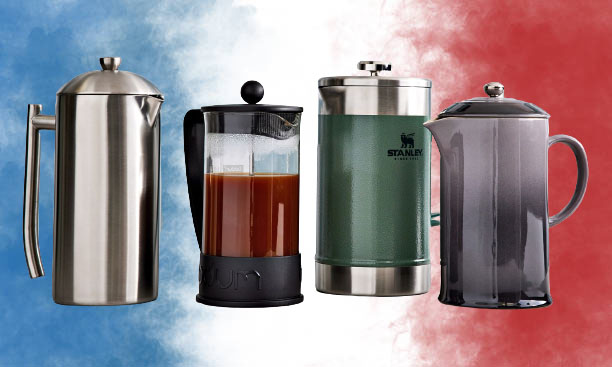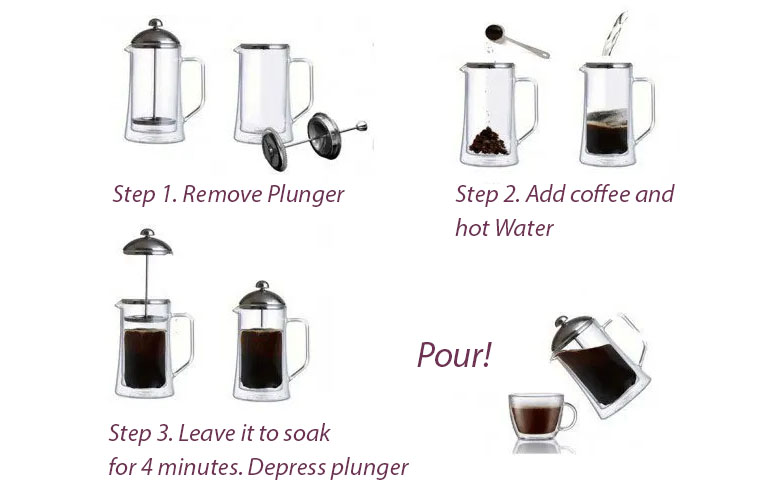The first French-press appeared in France in 1920 and in a short time won the love of the whole Europe. The device was valued for its ease of use and was considered a real exotic item: Only people with a very refined aesthetic taste could afford it.

The innovation of the French press was in its elegantly simple solution to brew drinks by infusion. The device takes up little space, yet allows to preserve the richness of taste and rich aroma of raw materials.
Operation and maintenance of French presses are cost-free and intuitive. An undeniable plus of the device is the possibility of manually adjusting the caffeine extraction during brewing, thus directly affecting the taste of the final beverage.
How is the French press constructed?
Today’s range of French presses is incredibly huge. Choosing a device, first of all, you need to pay attention to its technical characteristics.

The basic idea of the design of the device is quite simple. The brew and liquid are placed in a central cylindrical vessel, and the resulting drink is poured into a cup through a special spout. The central vessel is enclosed in a housing made of plastic or metal, which acts as a holder and at the same time protects against scalding.
The main mechanism, after which the device is named, is the press. It consists of a mechanical piston, to which a fine mesh is attached, filtering the finished drink from solid particles in the liquid. The design performs the function of the press, squeezing maximum nutrients from the coffee grounds. The finished drink is less thick than that brewed in a carafe.
The central flask of the device can be made of glass or plastic. Each material has its own advantages. Glass looks more elegant, lasts longer, does not enter into chemical reactions and guarantees the absence of foreign flavors. Plastic belongs to the safer – unbreakable – and cheaper solution, and both the container for the liquid and the body can be plastic.
How to brew coffee and tea in a French press
French presses are equally often used to brew coffee, tea, and herbal mixtures.
When brewing coffee, it is very important to choose the right grind: only coarse grind is suitable, which ensures full extraction and quality filtration. After selecting the variety, the grounds are poured on the bottom of the device at a rate of 6 grams per 100 ml of water at a temperature of about 90 degrees. After this, the container is covered with a lid for 4 minutes, and only then lowered the press rod.

Teas and tisanes are brewed in the same way, there are no special presses for them. The consistency of the raw material is suitable for any, which opens up the possibility to experiment with the taste, using different fillers and combining varieties.
